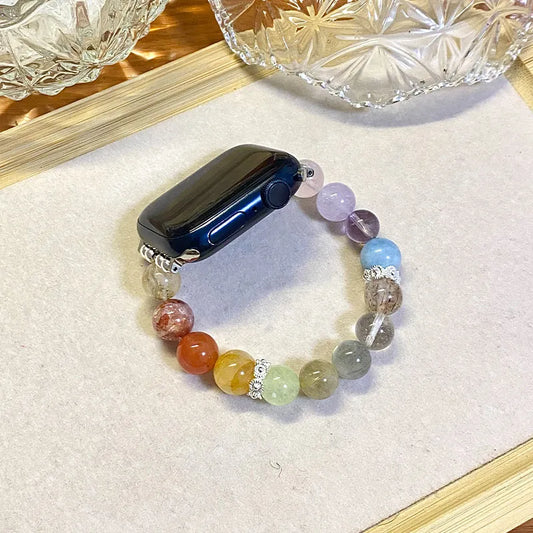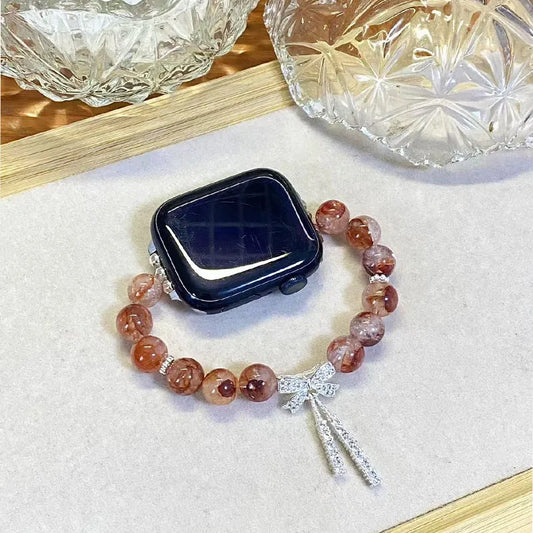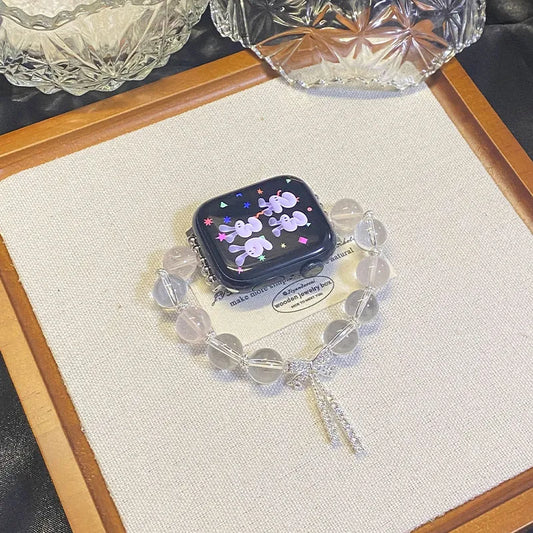Ever noticed your Apple Watch band turning blue and wondered what’s going on? It can be quite frustrating, especially if you love your watch’s sleek, original look.
In this article, we'll delve into why this happens, how to prevent it, and what you can do if your band has already started to change color.
Let's unravel the mystery behind those blue stains and find the perfect solution for your Apple Watch band.
Common Causes of a Blue Apple Watch Band
Chemical Reactions
One of the primary reasons for a blue Apple Watch band is a chemical reaction. Certain chemicals found in soaps, lotions, and even some body oils can interact with the band’s material, causing discoloration.
Exposure to Water
Water exposure, especially when mixed with salt or chlorine, can lead to staining. This is particularly common if you frequently wear your watch while swimming or during workouts.
Dye Transfer from Clothing
Ever noticed blue jeans leaving stains on your hands or other clothing? The same can happen with your watch band. Fabric dyes from your clothes, especially those with poor color fastness, can transfer to the band.
Types of Apple Watch Bands Prone to Discoloration
Silicone Bands
Silicone bands are popular for their comfort and versatility. However, they are more susceptible to color changes, especially when exposed to certain chemicals or dyes.
Leather Bands
Leather bands, while stylish, can react with sweat and oils, leading to discoloration. Additionally, some dyes used in leather can bleed onto the band.
Fabric Bands
Fabric bands, including those made from nylon or other textiles, are often prone to staining. The fibers can absorb dyes and chemicals, causing discoloration over time.
Factors That Accelerate Color Change
Sweat and Skin Oils
Sweat and skin oils are natural culprits in accelerating the color change process. These substances can interact with the band’s material, speeding up the discoloration.
Harsh Cleaning Products
Using harsh cleaning products, such as bleach or abrasive cleaners, can strip the band’s protective layer, making it more prone to staining.
Sun Exposure
Prolonged exposure to sunlight can cause fading and color change. UV rays can break down the materials in the band, leading to unwanted discoloration.
Preventive Measures
Proper Cleaning and Maintenance
Regular cleaning with mild soap and water can help maintain your band’s color. Avoid using harsh chemicals or abrasive materials.
Choosing the Right Band Material
Consider opting for bands made from materials known for their durability and resistance to staining, such as stainless steel or ceramic.
How to Clean a Blue Stained Apple Watch Band
Cleaning Silicone Bands
- Mild Soap Solution: Mix a small amount of mild soap with water. Use a soft brush or cloth to gently scrub the band. Rinse thoroughly and let it dry.
- Baking Soda Paste: For tough stains, make a paste with baking soda and water. Apply it to the stain, let it sit for a few minutes, then scrub gently and rinse.
Cleaning Leather Bands
- Leather Cleaner: Use a leather-specific cleaner and conditioner to clean and protect the band. Avoid water-based cleaners.
- Gentle Wiping: Use a soft, damp cloth to wipe the band gently. Avoid soaking it in water.
Cleaning Fabric Bands
- Mild Detergent Solution: Use a mild detergent mixed with water. Gently scrub the fabric with a soft brush. Rinse thoroughly and air dry.
- Stain Remover: For stubborn stains, use a fabric stain remover suitable for watch bands. Test it on a small area first.
For more detailed information, see How to Clean and Maintain Your Apple Watch Bands
When to Replace Your Band
Signs of Severe Damage
If your band is excessively discolored, cracked, or showing signs of wear, it might be time for a replacement. Severe damage can affect the band’s comfort and functionality.
Evaluating Cost vs. Replacement
Consider the cost of cleaning versus the price of a new band. Sometimes, investing in a new band can be more economical and aesthetically pleasing.
Alternative Band Options
Stainless Steel and Metal Bands
Metal bands are durable and resistant to staining. They offer a sleek, timeless look that pairs well with any outfit.
Nylon and Woven Bands
Nylon bands are breathable and lightweight, making them ideal for everyday wear. They are also less prone to staining compared to fabric bands.
Designer and Custom Bands
For those who want something unique, designer and custom bands made from various materials can add a personal touch to your Apple Watch.
Conclusion
If your Apple Watch band has turned blue, don’t panic.
Understanding the causes and taking preventive measures can help you keep your band looking great.
Whether it’s through regular cleaning, choosing the right material, or opting for alternative bands, you have plenty of options to maintain your watch’s style and functionality.
FAQs
Why is my Apple Watch band turning blue?
Your Apple Watch band might be turning blue due to reactions with sweat, environmental factors, or contact with other substances such as lotions or perfumes.
How can I prevent my Apple Watch band from discoloring?
Regular cleaning, proper storage, and using protective sprays can help prevent discoloration. Avoid exposing your band to direct sunlight, chemicals, and other harsh elements.
Can I clean a blue-stained Apple Watch band?
Yes, you can clean a blue-stained band using mild soap and water for silicone and fabric bands, or a specialized leather cleaner for leather bands.
What are the best materials to avoid discoloration?
Stainless steel, ceramic, and high-quality silicone are among the best materials to avoid discoloration. These materials are durable and resistant to reactions that cause color changes.
When should I replace my discolored Apple Watch band?
If cleaning methods do not restore the original color and the discoloration is severe, it may be best to replace your band. A new band can refresh the look of your Apple Watch.







